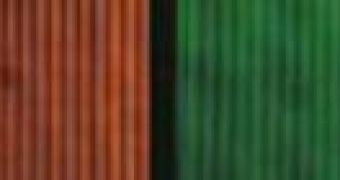Measuring the frequencies of visible light is not exactly the most difficult thing to do, but a team of experts at the National Institutes of Standards and Technology (NIST), in the United States, and the University of Konstanz, in Germany, has just finished developing a new tool that will make this process even simpler. Its wavelength comb, which actually does look like the personal accessory, helps highlight particular frequencies in an analyzed specimen, the science team says.
There are approximately 50,000 “teeth” spanning the visible wavelength spectrum, from red to blue, the group says, and all of the structures are visible through a simple scientific setup that uses only a grating and a microscope. Details of the innovative, new tool are presented in the October 30 issue of the top journal Science. The new instrument will be especially useful in the fields of astronomy and communications, but other areas of research could benefit from it as well, the investigators say.
Although it merited the 2005 Nobel Prize in physics, frequency-comb research never lived up to its name. The “teeth” were only visible using highly specialized equipment, as well as a great effort, as they were extremely close to one another. In spite of the fact that each “tooth” in the new comb represents a different, standalone color, the human eye is poorly equipped to recognize the subtle differences that occur between neighboring teeth, experts say. This happens solely because our light-detecting cells in the retina are not specialized enough for this type of task.
But, for scientific purposes, being able to precisely measure the characteristic of light waves emitted by lasers, atoms, stars and other such sources may prove to be invaluable. Calibrating astronomical instruments, for instance, may become extremely simple in the near future, a feat that may shorten the time interval between the moment when a telescope is launched and that when it is commissioned. The spectrum of frequencies that the new comb can analyze is also drastically enhanced thanks to the efficient coupling of the laser pulses it contains into a “nonlinear” optical fiber, the experts add.

 14 DAY TRIAL //
14 DAY TRIAL //